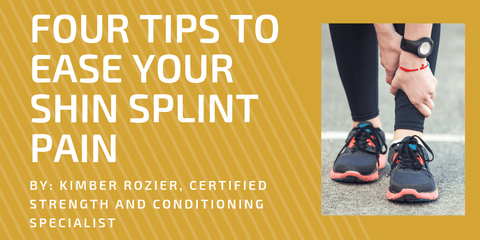We’re on our feet constantly, but no one knows how often more than someone with plantar fasciitis. Constant pain in the bottom of your foot disturbs any shot at a productive day. We’re here to explain what exactly is going on down there, and how to get back on your feet with these five tips to relieve plantar fasciitis pain.
What is your plantar fascia?
Your body contains connective tissue known as fascia. Fascia covers your entire body, surrounding muscles and tissue, but the part below the foot is known as plantar fascia.
Connecting your front and back foot, the plantar fascia runs from the heel bone to the metatarsal bones (mid-foot). Much like the cables along the arches of the Golden Gate Bridge, this tissue supports and stabilizes the structure of the foot.
Causes of Plantar Fasciitis
When the tension becomes too strained on any arch, the supporting cables begin to crumble. Imagine if something was constantly pulling a suspension bridge apart. Over time, the middle cables would start to suffer. That’s the equivalent of plantar fasciitis.
“Itis” means inflammation in medical terminology. Plantar fasciitis is a simple inflammation of your plantar fascia, causing immense pain. Because of its location at the heel, many normal activities become restricted or paused due to discomfort.
The exact cause isn’t always clear, but it typically concerns tightness of surrounding musculature and overuse of the feet. Common risk factors include:
- Age
- Jobs requiring extended standing
- Endurance sports
- Ballistic sports (jumping, sprinting, change of direction, etc)
- Obesity
- Poor foot mechanics
Create Your Own Ice Cup
There’s nothing fancy about this tried-and-true method of counteracting inflammation. Putting some ice on it might give you that instant relief you’re searching for, but how exactly do you ice the bottom of your foot? It’s a weird place to roll up a bag and hold underneath your arch.
If you’ve got access to some old paper cups, fill them with water and place in the freezer. Let freeze overnight or while you’re at work. Once the water has turned to ice, remove them from the freezer and peel back an inch of paper. Voila! You now have a handheld ice cup to roll along your bare feet when in pain. As the ice melts, continue to pull back the paper until complete.
Gently Stretch
Excessive tension in both the soleus and gastrocnemius can lead to plantar fasciitis. Attack the problem at its source by stretching the muscles of the calf. Effective stretches to tackle plantar fasciitis include:
- Straight leg wall stretches
- Bend knee wall stretches
- Slant board
- Stair stretch
- Foam rolling and massage
If you’re looking for relief along the actual fascia, roll a ball or soup can along the arch of the foot. This can help to break up some of the adhesion. Take care to not be too aggressive, as too much force can only exacerbate the issue.
Strengthen your Feet
For something that supports our bodies all day long, the strength of intrinsic foot musculature is often ignored. It makes sense then that our feet might be too weak to uphold the demands of activity. Foot-strengthening exercises along with gentle stretching have been shown to aid rehabilitation and alleviate pain associated with plantar fasciitis.
Rather than tie your shoes around a dumbbell at the gym, practice these simple techniques to strengthen your feet.
- Towel curls
- Active foot shortening exercises
Wear support
If you’re determined to continue activity, provide your feet with the best support. Old, worn-out shoes are a recipe for disaster when it comes to plantar fasciitis. Treat yourself to some shoes with good arch support for maximal comfort.
Unfortunately, even good shoes leave wiggle room for you to slide into poor foot position. Take no chances with compression. Secure arch support wraps around the foot and provides padding underneath problem areas. It’s like providing extra scaffolding under a crumbling bridge during repairs. Therefore, you can keep functioning as normal during rehab.
Severe plantar fasciitis might result in a prescription for orthotics. These are custom-made insoles for your shoes designed specifically with your needs in mind. Consult with your podiatrist to get fit for your particular arch issues.
Rest your feet
Rest your tired feet, give them a break, and let your fascia heal. Continue stretching, icing for inflammation, and addressing the root causes. But don’t overdo it. Let your actual injury recover and take some time away from activity.
Full rest can be difficult for athletes, people with active lifestyles, or a job that requires standing. After all, you can’t just quit your job for a little foot pain, right? Although complete rest is most effective, sports medicine doctors recommend “relative rest” for those in this category. Find ways to substitute problematic activity, such as biking, swimming, or shifting responsibilities for a while on the job.
Conclusion
It may seem overwhelming to constantly care for your aching feet, but it’s better than being sidelined from life. Get a compression wrap to take your mind off of it and go about your day. That way, when you come home, you can have your ice cup ready, do your stretches, and put your feet up. With a little bit of time and attention to your feet, you’ll be well on your way to recovery.
Learn, Inspire, Share.


